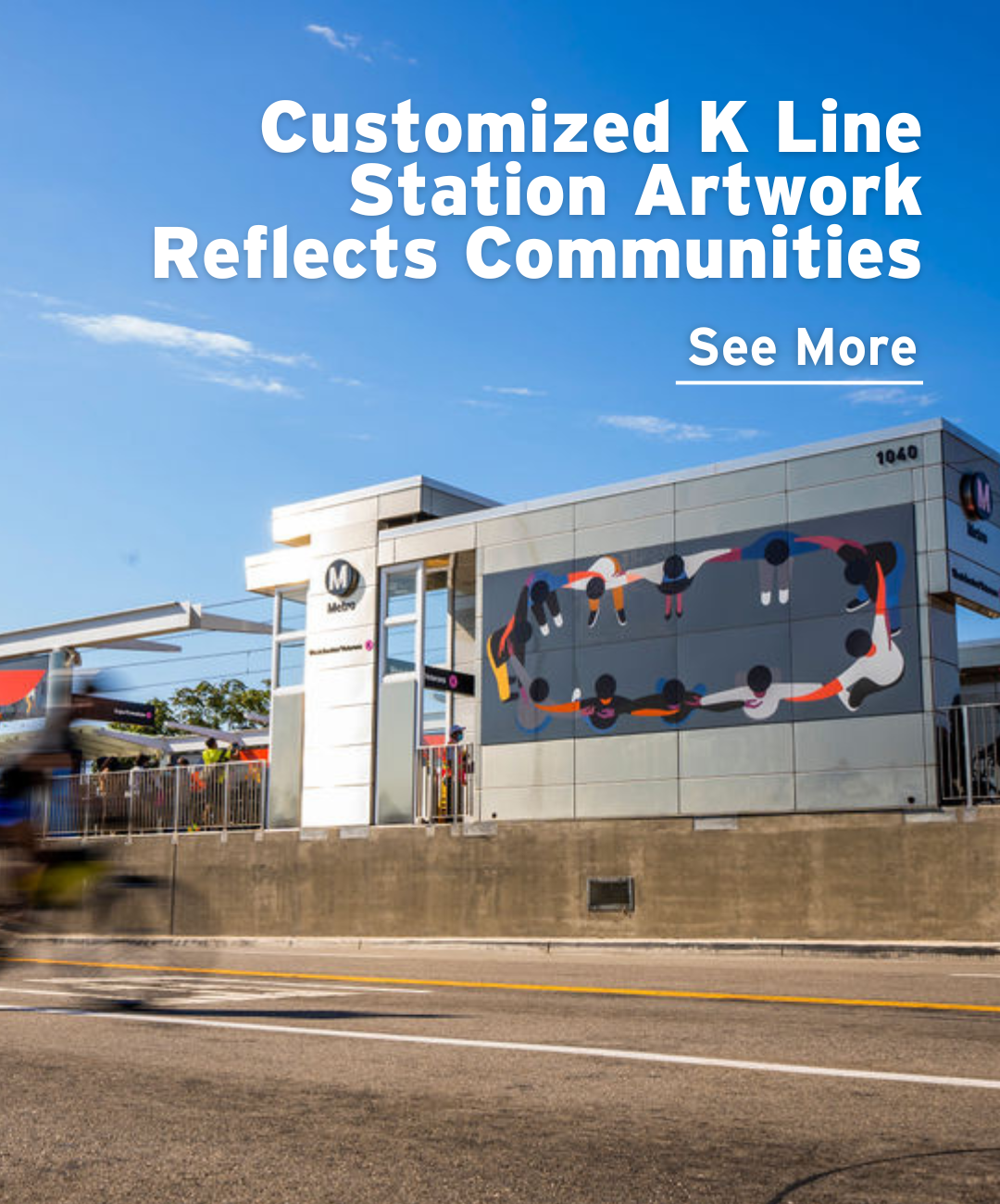Los Angeles’ new K Line opens a gateway to jobs, education and healthcare for communities
DESIGNER
2023
A new light rail line in South Los Angeles, decades in the planning, is now realized and is affirming Crenshaw Boulevard as the present and future cultural hub for the community it serves. Developed by the Los Angeles County Metropolitan Transportation Authority (Metro), the K Line, previously known as the Crenshaw/LAX Line Transit Project, links residents and businesses along the grand boulevard corridor to the region’s transit lines.
The rail line opens a convenient, safe transit alternative for historically underserved area residents to connect to other areas of the city, as well as providing a gateway for development and to the cultural events celebrated regularly by Crenshaw-area communities. When the K Line opened in October 2022, former Mayor Eric Garcetti hailed it as “integral to Los Angeles’ transportation future. It is a game changer that de-isolates South LA.”
As part of the Walsh-Shea Corridor Constructors design-build team, HNTB served as lead designer and principal engineer for the K Line, which links to two other Metro lines — the E Line and the C Line, providing connections to downtown and the entire Metro network.
Project Facts:
- 8.5 miles of new light rail transit
- 8 new stations
- 7 structures
- 1 mile of twin bored tunnels
- 3 cut-and-cover tunnels
“As an Angeleno fortunate to have worked on Metro projects starting with the Blue (A) Line in the early 1990s, I recognize that the K Line shifts the paradigm for the Crenshaw Corridor’s high concentration of culturally diverse, transit-dependent residents,” said Art Hadnett, HNTB regional growth officer. “This is a promise fulfilled: local access to convenient, reliable, low-cost rail transit and faster access to the regional transit network.”
The project also includes eight new transit stations, seven structures and three park-and-ride facilities. The northern 6 miles is in operation benefiting the community and providing improved access. A second phase, expected to open in 2024, will complete the K Line, adding another station and providing a first-time, long-sought-after rail link to Los Angeles International Airport.
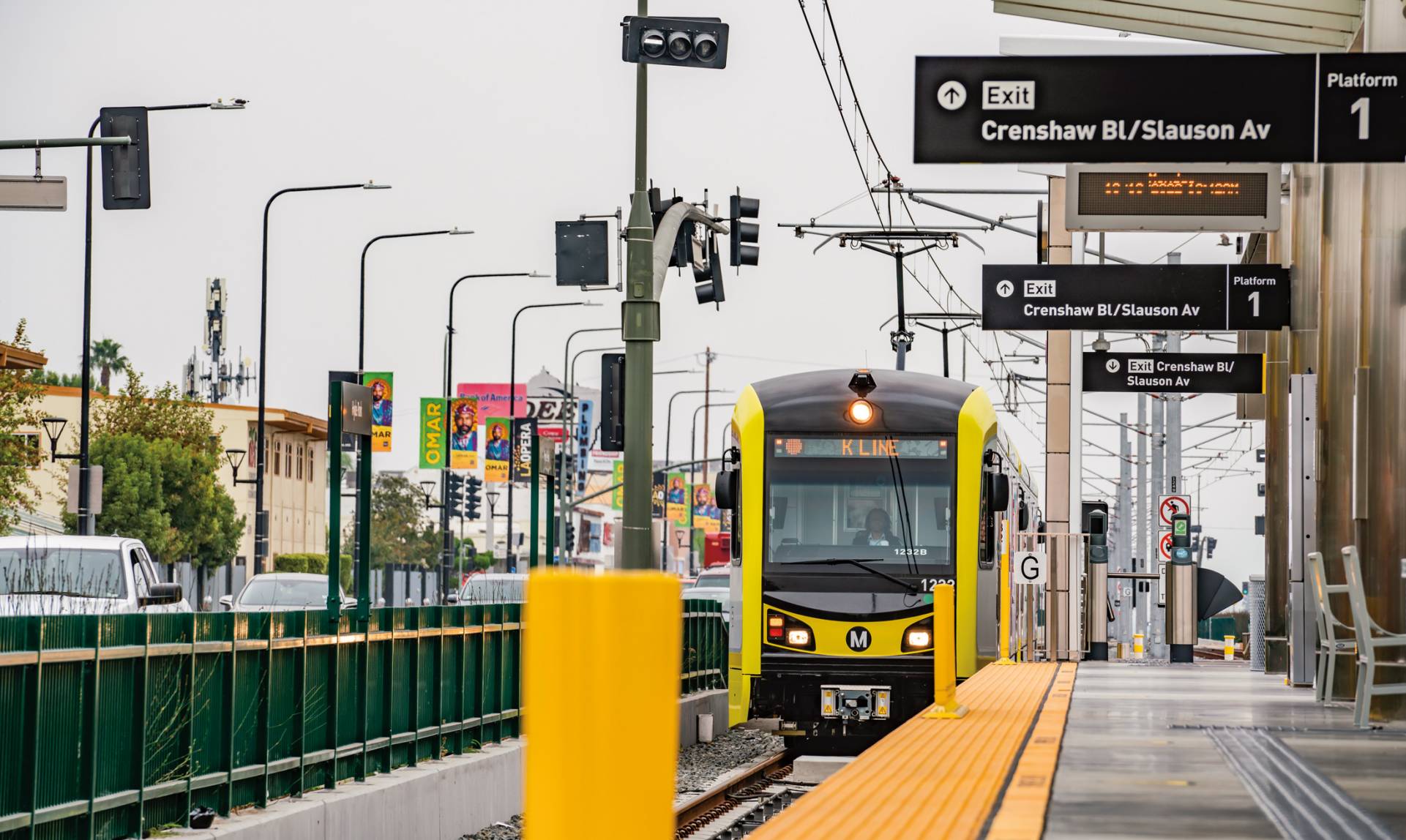
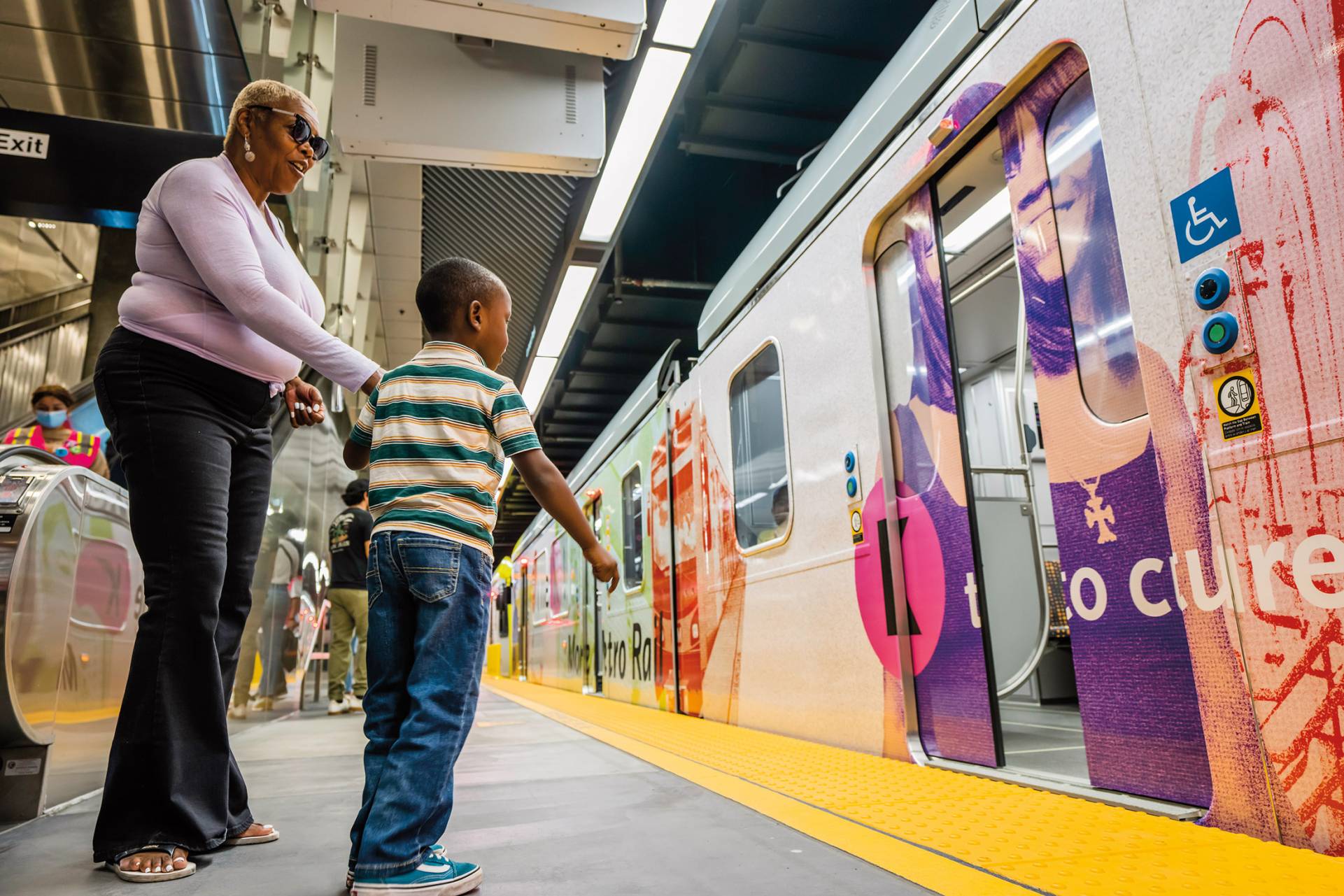
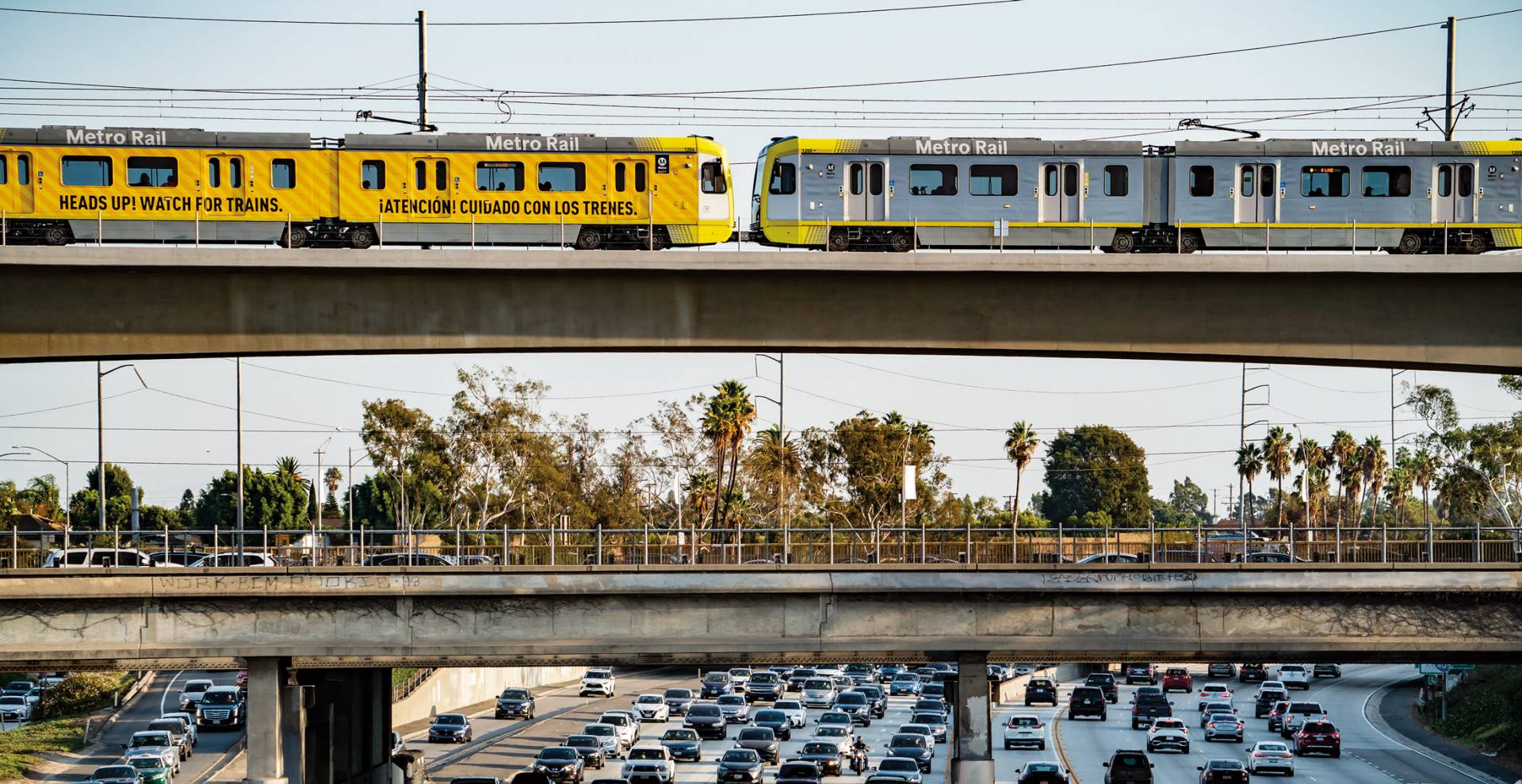
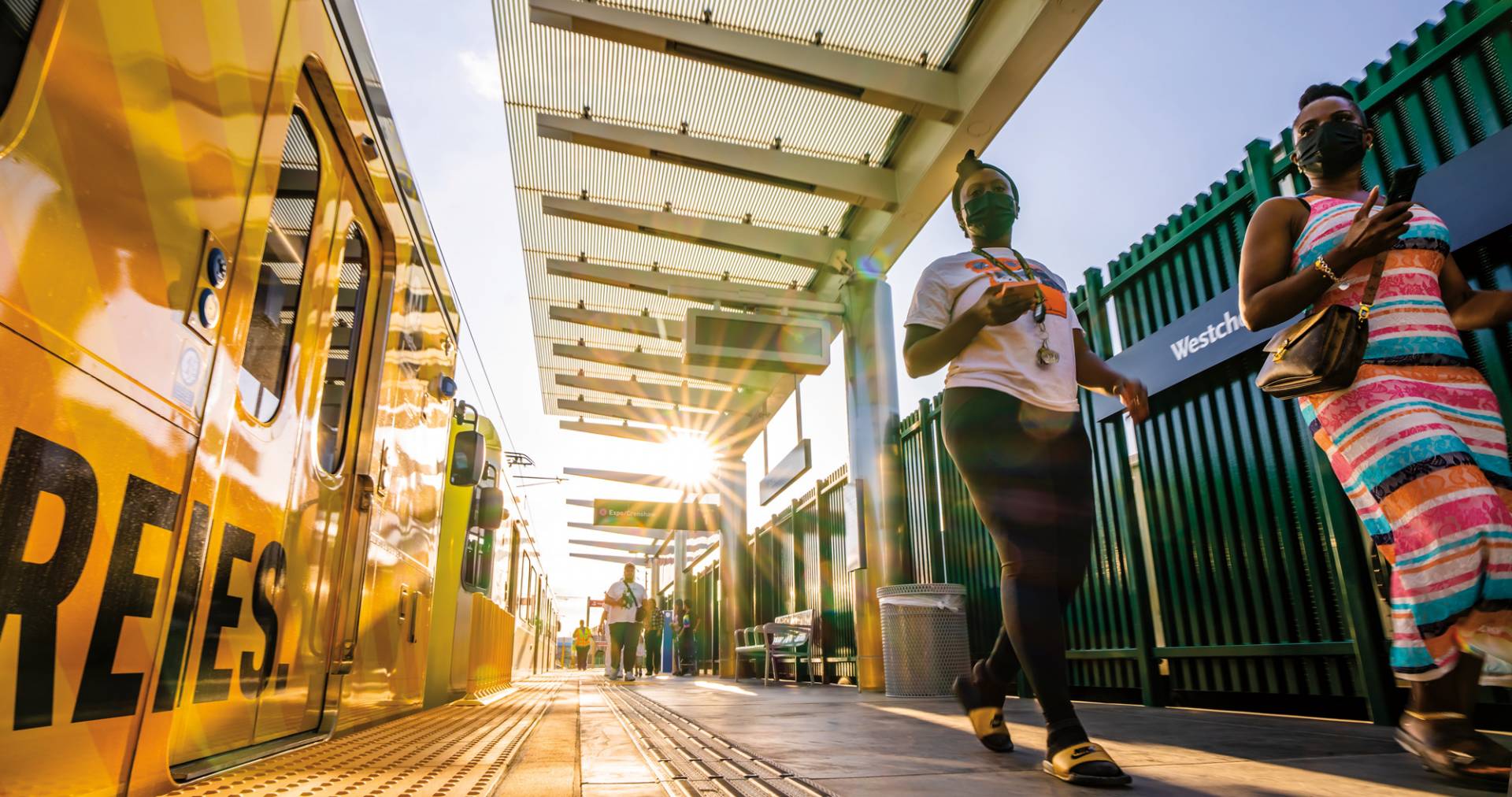
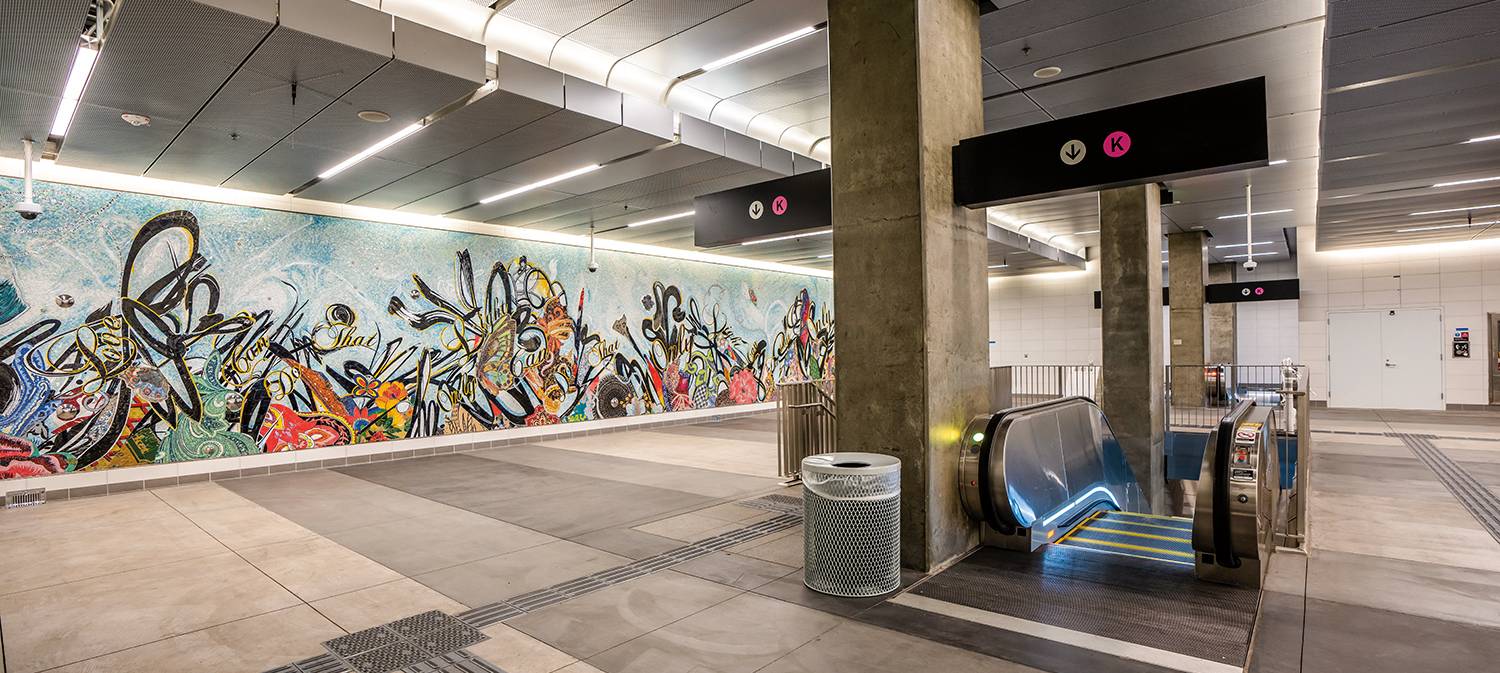
“The opening of the K Line fulfills a promise long made to the people of South Los Angeles and Inglewood to provide transportation infrastructure that will offer greater access to jobs and community amenities.”
Los Angeles County Metropolitan Transportation Authority CEO
Community-oriented design
With the K Line opening, Metro riders have easier access to medical facilities, jobs, commerce centers and sports venues, including SoFi Stadium. Riders also can more conveniently attend cultural events and reach major venues in the historic Crenshaw Corridor, including the Kia Forum and Leimert Plaza Park. Many of the key destinations along the K Line are within walking distance of the stations.
The K Line was envisioned to usher in a new era of equitable transportation investment and access. To achieve the vision, local voices and community input were critical to its development. Metro created broad opportunities for public participation throughout the planning and design process. Tens of thousands of community members voiced their thoughts. Residents were continuously engaged in dialogue to ensure the project would be completed in ways that met the needs of local neighborhoods.
A Community Leadership Council was established to provide feedback and participate in topic-specific working groups, quarterly community meetings, bi-monthly construction meetings and special project collaborations with Metro staff and other community groups.
Locally based design subconsultants also played key roles in executing components of the technically complex K Line.
“Virtually every engineering challenge was encountered as a part of this light rail project,” said Chris Devery, HNTB project manager. “The project scope included track and civil, structural, architecture, MEP and rail systems which required more than 30 design subconsultants, specializing in specific technical areas. That mix of companies was necessary to complete a project of disparate parts that had to come together.”
Of the 30-plus design subconsultants who worked on project design, 26 were small Los Angeles businesses or disadvantaged business enterprises (DBE) registered with Metro. Many were selected because they already had relationships with the community the K Line would serve, a choice that gave the design team insight to the project, Devery said.
I-405 Bridge
A new bridge soars above Interstate 405 in south Los Angeles, carrying K Line passengers over the congested freeway. The longest single span on the Metro system, the 315-foot bridge exceeds the length of a football field. It was a standout among the many visible, unique elements of the K Line project.
In the pre-award competition to choose the firm that would build the project, the structure was envisioned with a pier that would have been placed in the freeway median.
To minimize disruption to the traveling public and improve construction safety, the design-build team proposed an alternate technical concept, during the procurement phase, and proposed to build a structure that would span I-405 without the column below. While this change made the bridge less disruptive and safer to build, it also increased design and construction complexity.
To minimize traffic interruptions, the bridge was built using a continuous, 24-hour concrete pour that started at both ends of the bridge and met in the middle. The project stretched the limits of local concrete companies, which had to schedule drivers through multiple shifts, keep their plants running continually and arrange traffic control to make sure concrete flowed consistently throughout the 24-hour period. Ultimately, the pour was executed without a hitch.
K Line underground
HNTB’s design included more than 30 subconsultants, meeting the technical needs of the project and reflecting the local community. For the complex underground structural components to meet stringent seismic design requirements, HNTB and Arup North America each completed independent designs then collaborated to reconcile differences for the bored tunnel, the underground stations and the cut-and-cover tunnel structures.
Understanding corridor business needs
The design-build team worked to construct the project with equal sensitivity to area residents and businesses.
“Rather than placing the project in the community, Metro looked for ways to integrate it into the community,” said Adam Dayhoff, HNTB design manager. “In many cases, construction disrupts businesses as well as citizens. Metro and the design-build team took care to stage and perform construction to minimize impacts to community members and corridor businesses as well as listen to the community on how to improve this process along the way.”
Metro created three programs to help local businesses challenged by the project’s construction:
- Business Interruption Fund. Through the fund, “mom-and-pop” businesses along the project corridor could apply for financial assistance annually to mitigate shortfalls in their income caused by project construction. Before construction concluded, Metro had awarded more than $20.1 million to more than 230 unique small businesses.
- Eat, Shop, Play Crenshaw. Local businesses along the construction route received marketing assistance through the program, including free advertising, social media and email marketing; events at which they could promote their goods and services; and lunches held to feature and encourage support of individual businesses. More than 150 small companies participated.
- Business Solution Center. The Center provided hands-on business development, support services, technical assistance and business resource referrals for more than 300 small companies.
Across the finish line
The K Line project introduced model programs — including early and extensive community engagement, small business support, local employment opportunities and community-based artwork for each station — that now are used on all of Metro’s major construction projects. The project also has spurred new development, including affordable housing components of minority developers’ projects in the historic Leimert Park neighborhood.
Metro’s transit network will continue to expand its reach. The Aviation/Century Station and the LAX/Metro Transit Center Station are expected to open in 2024. The LAX/Metro Transit Center Station will let riders transfer easily between the LAX Automated People Mover and Metro’s light rail system, providing more options for travelers and employees to get to the airport.
“Metro continues to invest in developing world-class, equitable infrastructure for the benefit of all Angelenos,” Hadnett said. “The K Line is a transformative project that offers an option to congested roadways and provides significant environmental benefits, economic development and employment opportunities throughout Los Angeles County.”
CONTACT
Chris Devery
HNTB Project Manager
(310) 846-1811
Adam Dayhoff
HNTB Design Manager
(213) 337-2150
SEE MORE ARTICLES
MORE DESIGNER STORIES
LOWER.COM FIELD
SIXTH STREET VIADUCT
I-74 MISSISSIPPI RIVER BRIDGE
I-69 FINISH LINE
JTA's ORANGE LINE

